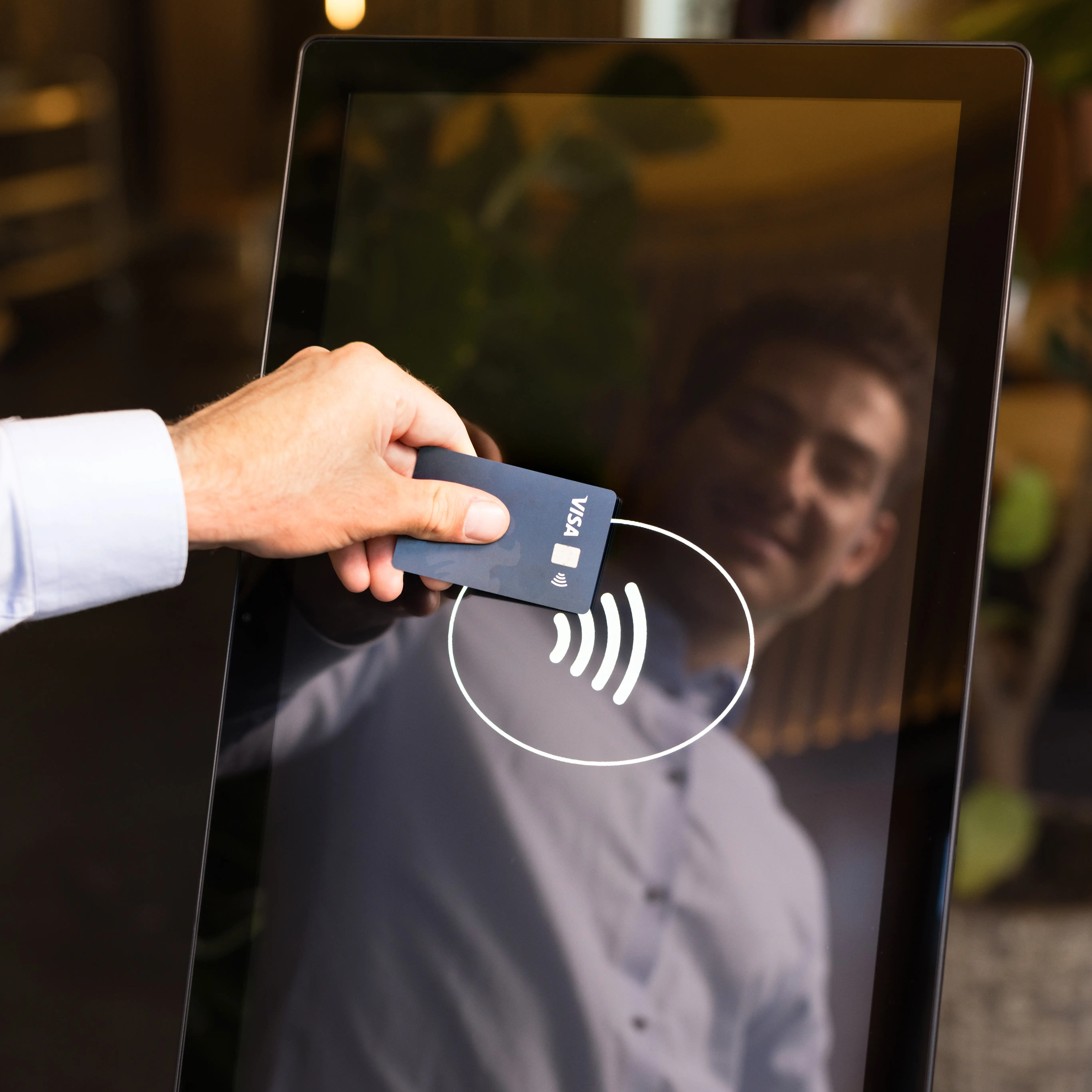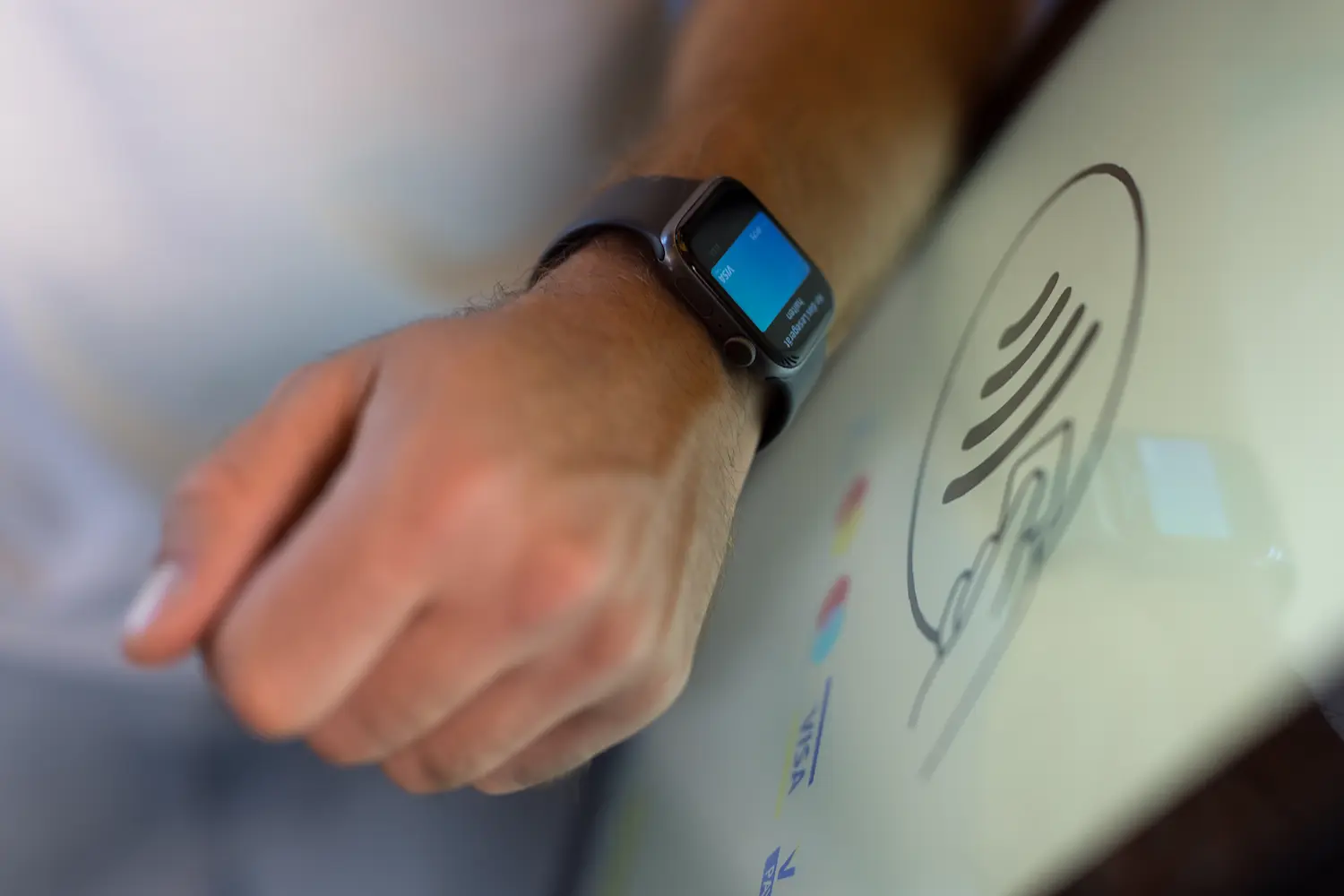Table of contents:
1. What is Contactless Payment?
2. How does Contactless Payment work?
3. What are the Different Types of Contactless Payment?
4. Advantages of Contactless Payment
5. Benefits for Businesses
6. Challenges and Solutions
7. How oona Can Help
Contactless Payments
Forgotten bank PINs are quickly becoming a relic of the past with the increased rise of contactless payments. But what is contactless payment and more importantly, how does the technology work? Here’s a guide on everything you need to know about the workings of contactless payment and the benefits it can provide.
What is Contactless Payment?
As the name suggests, contactless payment is a secure and easy payment method made using a contactless card or other device, such as a smartphone. The process doesn’t require any physical contact between a credit card/smart device and a payment reader.
Contactless payments started out in the 1990s as a more secure and convenient way to make payments. The popularity and prevalence of different contactless payments grew rapidly from 2010 onwards, as Google, Apple, and Android all came on board. The technology used for contactless payments is much more secure than that of magnetic-stripe cards, which are susceptible to being intercepted by fraudsters.
How does Contactless Payment work?
Contactless transactions are made via either radio frequency identification (RFID) or near-field communication (NFC) technology. When a card or smart device is within close proximity to the payment reader, these radio waves enable a transaction to take place between two devices. The payment information is tokenized for added security.
What are the Different Types of Contactless Payment?
There are a few different types of contactless payment, with the most common being contactless cards. These are often called “tap-to-pay” cards and are equipped for wireless communication with a payment reader.
Mobile apps and wallets are becoming a popular payment option. They work in the same way as a contactless card, where a bank account is downloaded or linked to the smart device and used in the same tap-to-pay function. The three types of mobile payments most popular at the moment are Google Pay, Apple Pay, and Samsung Pay.
Advantages of Contactless Payment
Convenience for Consumers
One of the best things about contactless transactions is consumer convenience. Creating an easy payment experience means fast transactions and efficient payment processes.
Contactless technology also minimizes waiting periods and shortenes transaction delays, creating less unnecessary contact between customers and employees.
Security Aspects
When it comes to payment security, contactless payments can be safer and more secure than traditional magnetic-stripe cards.
There’s less opportunity for a contactless payment to be hacked or cloned. When using traditional payment methods, cards must be swiped or inserted into a payment reader. This physical interaction provides more opportunities for sensitive information to be read or cloned. Through contactless payments, tokenized bank information is sent via radio waves, which is less capable of being hacked.
Hygienic Aspects
Since the COVID-19 pandemic, many people have become more concerned and aware of the hygiene measures being undertaken by businesses. Going contactless means establishing clean payment methods with reduced physical contact, giving customers more peace of mind when making payments.
Benefits for Businesses
Improved Efficiency in Payment Transactions
Going contactless also has many positive benefits for businesses. For one, it removes the need for cash. There’s also the improved payment workflow, as contactless payment methods mean fast Point-Of-Sales (POS) transactions. The customer experience is also optimized – a quick checkout and reduced wait times establish a better overall customer experience.
Cost Reduction
By implementing a contactless payment system, businesses also reduce cash-handling costs, which can lower cash administration expenses. Change-free transactions mean less room for human error and boosts the financial benefits of speedy transactions.
Customer Satisfaction and Brand Image
With the abundance of contactless payment options, people have grown accustomed to seeing smart payment devices with in-built contactless options. These systems are easy to use and can build a modern image for any business, thereby creating positive customer interactions and helping businesses stay competitive.
Challenges and Solutions
Data Privacy and Security
There are plenty of benefits to using contactless payments, but that doesn’t mean there aren’t any risks involved. Because a PIN or signature isn’t needed to make a payment, lost or stolen cards can fall victim to payment fraud.
The use of tokens in data transmission and establishing secure internet networks for payment reader applications can help make data more secure.
Acceptance and Infrastructure
As with any modern technological advancement, there can be small adoption hurdles to overcome. For some, the tap-to-pay action is a change to their regular payment habits. For others, there are perceived security issues that can create a psychological barrier.
By investing in contactless payment infrastructure that is secure, simple, and easy-to-use, businesses can overcome these small barriers and help their customers better accept contactless payment.
How oona Can Help
oona devices offer a new age of contactless checkout, where faster transactions, customer ease, and secure payment solutions are top priority. With the latest technology built into oona devices, businesses and customers alike can enjoy ultra-fast, safe transactions.
Share this
You May Also Like
These Related Stories

Speed of Contactless Payment and Its Efficiency for Businesses

Different Types of Contactless Payment

